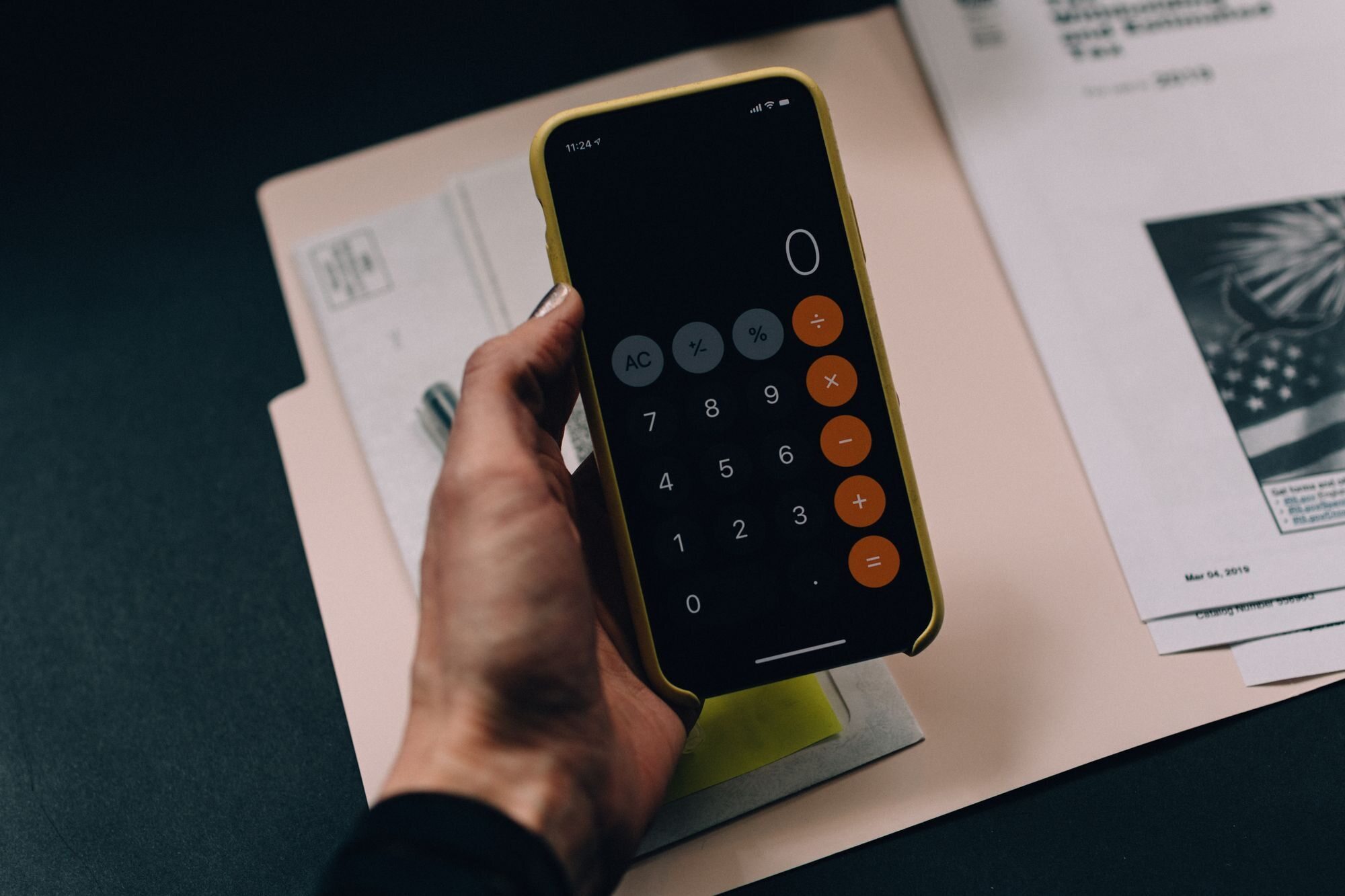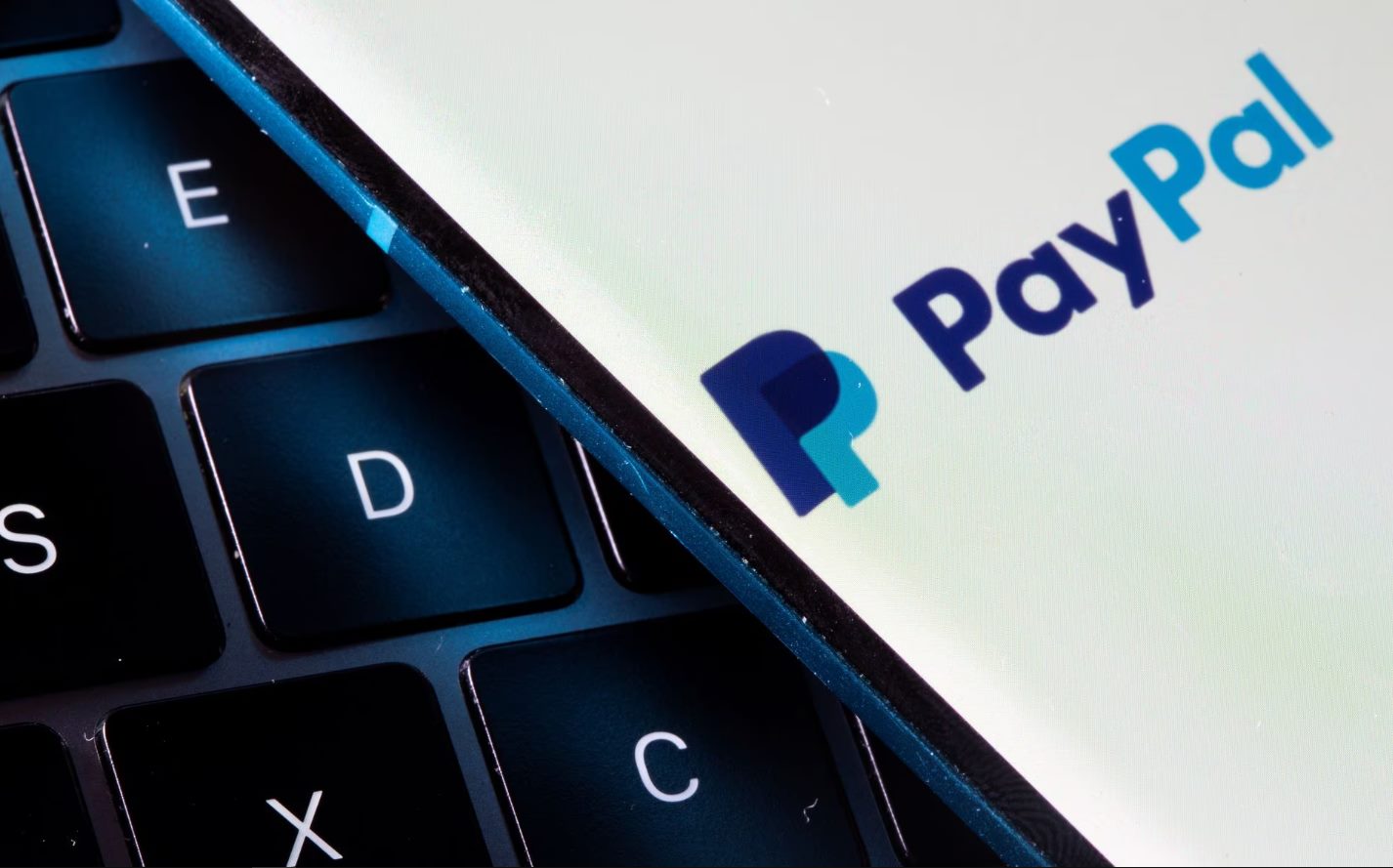Introduction
With the globalization of economies and the widespread movement of people across borders, the need for international money transfer has become increasingly important. Whether it’s sending funds to family members in another country, paying for products or services from overseas vendors, or conducting business transactions on a global scale, the ability to transfer money across borders efficiently and securely is crucial.
International money transfer refers to the process of sending money from one country to another. In the past, this process was often complex and time-consuming, involving visits to banks, filling out paperwork, and paying high fees. However, with the advancement of technology, the rise of digital money transfer services has revolutionized the way we send and receive money across international borders.
This article will explore the concept of international money transfer, the traditional methods that were used in the past, and the emergence of digital money transfer services that have simplified and expedited the process. We will also discuss the advantages of using digital money transfer services, factors to consider when choosing a provider, and important safety measures to ensure secure transactions.
By the end of this article, you will have a comprehensive understanding of international money transfer and the options available to you. So, let’s delve into the exciting world of global finance and discover how technology has transformed the way we send and receive money across borders.
What is international money transfer?
International money transfer refers to the process of sending money from one country to another. It involves the conversion of one currency into another and is often done to fulfill various financial needs, such as sending money to family or friends abroad, paying for goods or services from international vendors, or conducting business transactions on a global scale.
In the past, international money transfer was primarily conducted through traditional methods such as wire transfers, checks, or money orders. These methods were often slow, cumbersome, and expensive, with high fees and unfavorable exchange rates.
However, with the advent of digital technology, the landscape of international money transfer has evolved significantly. Digital money transfer services now provide a faster, more convenient, and cost-effective alternative to traditional methods.
These digital services leverage online platforms or mobile applications to enable individuals and businesses to transfer funds securely and efficiently across borders. They often offer competitive exchange rates and lower fees compared to traditional banking institutions, making it more accessible for people from all walks of life to send and receive money internationally.
Whether you’re a student studying abroad, an expatriate working in a different country, or a small business owner seeking global partnerships, international money transfer services are designed to cater to your specific needs.
By leveraging technology and the power of the internet, these services have significantly streamlined the process, allowing users to initiate transfers with just a few clicks or taps. The funds can then be deposited into the recipient’s bank account, mobile wallet, or picked up in cash at designated locations, depending on the service provider and the options available in the recipient’s country.
Overall, international money transfer has become an essential service in today’s interconnected world. It facilitates global commerce, enables individuals to support their loved ones overseas, and contributes to economic growth and development across nations.
In the following sections, we will explore the traditional methods of international money transfer and delve deeper into the advantages of using digital money transfer services, empowering you to make informed decisions when it comes to transferring funds internationally.
Why do people need to transfer money internationally?
The need to transfer money internationally arises for various reasons, and it plays a vital role in supporting individuals and businesses across borders. Let’s explore some of the common reasons why people need to transfer money internationally:
1. Sending money to family and friends: Many people have loved ones residing in different countries. International money transfer allows them to send financial support to their families, whether it’s for daily expenses, education, healthcare, or special occasions. It helps maintain connections and support the well-being of their loved ones.
2. Travel and leisure: Whether it’s for vacations, studying abroad, or pursuing exotic experiences, international travel often requires individuals to transfer money to their destination countries. This can involve paying for accommodation, transportation, food, and other expenses during their stay.
3. Business transactions: In today’s globalized economy, businesses frequently engage in cross-border transactions. This could involve paying suppliers or overseas employees, receiving payments from international clients, or investing in foreign markets. International money transfer facilitates these transactions, ensuring the smooth operation of business activities and expansion opportunities.
4. Overseas education: Students who choose to study in countries outside their home often require funds for tuition fees, living expenses, and other educational expenses. International money transfer enables parents or students themselves to transfer funds to cover these expenses efficiently and securely.
5. Investment and real estate: Individuals and businesses looking to invest in foreign markets or purchase properties abroad may need to transfer money internationally. This enables them to fund investments, make property purchases, or engage in other financial transactions related to overseas assets.
6. Migration and relocation: People who are planning to migrate or relocate to a different country need to transfer their finances to the new destination. This includes transferring savings, closing bank accounts, paying off debts, and starting financial arrangements in the new country.
7. Philanthropy and charitable contributions: Many individuals and organizations support charitable causes internationally. International money transfer allows them to make donations and contribute to humanitarian efforts around the world, supporting communities in need and making a positive impact.
These are just a few examples of why people need to transfer money internationally. The ability to send and receive funds across borders is essential for personal, professional, and humanitarian reasons, and the emergence of digital money transfer services has made this process faster, more affordable, and more accessible than ever before.
In the following sections, we will explore the traditional methods of international money transfer and learn about the rise of digital money transfer services, providing you with a comprehensive understanding of the options available to fulfill your international money transfer needs.
The traditional way of transferring money internationally
Before the emergence of digital money transfer services, the traditional methods of transferring money internationally involved lengthy processes, paperwork, and higher costs. Let’s explore some of these traditional methods:
1. Wire transfers: Wire transfers involve sending money electronically from one bank account to another. To initiate a wire transfer, individuals would visit their local bank branch and provide the necessary details, such as the recipient’s bank account number, the receiving bank’s information, and the desired amount to be transferred. The funds would then be transferred through a series of intermediary banks, which could take several business days to complete. Wire transfers were typically expensive, with high fees and unfavorable exchange rates.
2. Checks and money orders: Another traditional method of transferring money internationally was through checks or money orders. Individuals would write a check or purchase a money order from their local bank and then mail it to the recipient or the recipient’s local bank. The recipient would then need to deposit the check or money order and wait for it to clear, which could take several business days or even weeks. This method was time-consuming and carried the risk of the check or money order being lost or stolen in transit.
3. Foreign currency drafts: Foreign currency drafts, also known as banker’s drafts, were another way to transfer money internationally. Individuals would purchase a draft from their bank by providing the amount to be transferred in the desired currency. The draft would then be sent to the recipient, who could deposit it into their bank account or cash it at a local bank. However, this method required physical delivery of the draft and could take a considerable amount of time to reach the recipient.
While these traditional methods were once the primary means of transferring money internationally, they had several limitations. They were often slow, costly, and involved manual processes that required individuals to physically visit a bank branch or send documents through mail. Additionally, the exchange rates offered by banks were often unfavorable, resulting in the recipient receiving less money than anticipated.
Fortunately, advancements in technology have revolutionized the way we transfer money internationally, offering more efficient and cost-effective solutions. In the next section, we will explore the rise of digital money transfer services and how they have transformed the landscape of international money transfer.
The rise of digital money transfer services
In recent years, the rise of digital technology has led to the emergence of digital money transfer services, transforming the way we send and receive money internationally. These services provide a convenient, fast, and cost-effective alternative to traditional methods. Let’s explore how digital money transfer services have gained popularity:
1. Convenience and accessibility: Digital money transfer services offer a high level of convenience. Users can initiate transfers from the comfort of their own homes or on-the-go using their smartphones or computers. This eliminates the need to visit a physical bank branch or fill out paperwork, saving time and effort. Additionally, digital money transfer services are often available 24/7, allowing users to send and receive money at any time that is convenient for them.
2. Speed and efficiency: Digital money transfer services significantly reduce the time required to send and receive funds internationally. Transfers can be completed within minutes or hours, depending on the service provider and the destination country. This is a vast improvement compared to traditional methods, which could take several business days or even weeks for the funds to reach the recipient. Faster transfers enable recipients to access the funds more quickly, providing them with greater financial flexibility.
3. Cost-effectiveness: Digital money transfer services often offer competitive exchange rates and lower fees compared to traditional banking institutions. This makes transferring money internationally more affordable for individuals and businesses, especially for frequent or large transactions. Users can save on fees and potentially receive better exchange rates, resulting in more money reaching the recipient.
4. Multiple transfer options: Digital money transfer services provide users with a range of transfer options to suit their specific needs. These options may include direct bank transfers, mobile wallet transfers, and cash pickup services. Users can choose the most convenient method for the recipient, depending on their location and preferences. Offering multiple transfer options ensures flexibility and accessibility for a diverse range of users.
5. Enhanced security: Digital money transfer services prioritize the security of transactions and customer data. They implement robust encryption technologies and identity verification processes to safeguard sensitive information. This gives users peace of mind, knowing that their money transfers are protected against unauthorized access and fraud.
The rise of digital money transfer services has democratized international money transfers, making it more accessible and affordable for people from all walks of life. Small businesses, individuals, and families can now transfer funds globally without the hassle of traditional methods.
In the next section, we will explore how digital money transfer services work and delve into the advantages they offer over traditional methods, empowering you to make informed choices for your international money transfer needs.
How do digital money transfer services work?
Digital money transfer services leverage technology and online platforms to facilitate the seamless transfer of funds internationally. Let’s take a closer look at how these services work:
1. Online registration and verification: To use a digital money transfer service, users typically need to create an account by providing their personal information, such as name, address, and contact details. They may also be required to verify their identity by submitting identification documents or answering security questions. This process is essential to ensure the security and integrity of the transactions.
2. Funding the transfer: Users can fund their transfer by linking their bank account or credit card to their digital money transfer service account. Once the funding source is verified, users can proceed to initiate the transfer by entering the recipient’s information and the desired amount to be sent. Some services may also offer the option to fund the transfer through cash deposits at authorized locations.
3. Currency conversion: If the transfer involves a currency exchange, the digital money transfer service will automatically convert the funds into the recipient’s currency at the prevailing exchange rate. This eliminates the need for users to manually calculate exchange rates or visit currency exchange offices, saving time and reducing the chances of errors.
4. Transfer initiation: After confirming the transfer details, users can initiate the transfer through the digital money transfer service’s online platform or mobile application. The service will then process the transfer and provide a confirmation and reference number for tracking purposes.
5. Delivery options: Digital money transfer services offer various delivery options depending on the recipient’s location and preferences. These options may include direct bank transfers, where the funds are deposited into the recipient’s bank account, or mobile wallet transfers, where the funds are credited to the recipient’s digital wallet for immediate use. Some services may also offer cash pickup options at authorized agent locations, allowing recipients to collect the funds in person.
6. Tracking and notifications: Throughout the transfer process, digital money transfer services provide users with real-time tracking of their transactions. Users can monitor the progress of the transfer, ensuring transparency and peace of mind. Additionally, many services offer notifications via email or SMS to keep users informed about the status of their transfers.
7. Security measures: Digital money transfer services prioritize the security of transactions and customer data. They employ encryption technologies, firewalls, and other security measures to protect sensitive information from unauthorized access. Users can trust that their personal and financial details are handled securely during the transfer process.
By leveraging technology and providing a user-friendly interface, digital money transfer services have simplified the international money transfer process. They offer convenience, speed, and cost-effectiveness, empowering individuals and businesses to send and receive funds globally with ease.
In the next section, we will explore the advantages of using digital money transfer services over traditional methods, highlighting why more people are opting for these services for their international money transfer needs.
Advantages of using digital money transfer services
Digital money transfer services offer numerous advantages over traditional methods, making them an attractive choice for individuals and businesses sending money internationally. Let’s explore some of the key advantages of using these services:
1. Convenience and accessibility: Digital money transfer services provide a high level of convenience. Users can initiate transfers from the comfort of their own homes or on-the-go using their smartphones or computers. This eliminates the need to visit a physical bank branch or fill out paperwork, saving time and effort. Additionally, many digital money transfer services offer user-friendly interfaces and intuitive mobile applications, making the process even more accessible for people with varying levels of technological literacy.
2. Speed and efficiency: One of the significant advantages of digital money transfer services is the speed at which funds can be transferred. International transfers that used to take several business days or even weeks with traditional methods can now be completed within minutes or hours with digital services. This expedited process ensures that the recipient can access the funds quickly, offering greater financial flexibility and convenience.
3. Cost-effectiveness: Digital money transfer services often offer competitive exchange rates and lower fees compared to traditional banking institutions. This translates to cost savings for users, especially for frequent or large transactions. By maximizing their transfer value, users have more money reaching the intended recipient, enabling them to achieve their financial goals more effectively.
4. Transparency and tracking: Digital money transfer services provide users with real-time tracking of their transactions. Users can monitor the progress of their transfers and receive notifications or updates at different stages of the process. This transparency offers peace of mind, ensuring that users are informed about the status of their transfers and making the entire experience more reliable and trustworthy.
5. Flexibility of delivery options: Digital money transfer services offer a range of delivery options to suit the needs of the recipient. These options may include direct bank transfers, mobile wallet credits, or cash pickups at authorized agent locations. Users can choose the most convenient method based on factors such as the recipient’s location, preferences, and urgency of the transfer. This flexibility ensures that users can tailor the delivery method to align with the recipient’s needs effectively.
6. Enhanced security measures: Digital money transfer services prioritize the security of transactions and customer data. They employ robust encryption technologies, secure protocols, and multiple layers of authentication to safeguard sensitive information. This provides users with peace of mind, knowing that their financial transactions are protected from unauthorized access or fraud.
These advantages make digital money transfer services a compelling choice for individuals and businesses seeking to send money internationally. The convenience, speed, cost-effectiveness, transparency, and security offered by these services have transformed the way we transfer funds across borders.
Next, we will discuss the factors to consider when choosing a digital money transfer service, enabling you to make informed decisions and select the most suitable provider for your international money transfer needs.
Factors to consider when choosing a digital money transfer service
When selecting a digital money transfer service for your international transfers, it’s crucial to consider several factors to ensure a smooth and secure experience. Let’s explore the key factors to consider when choosing a digital money transfer service:
1. Exchange rates: Compare the exchange rates offered by different digital money transfer services. Small differences in exchange rates can have a significant impact on the amount received by the recipient. Look for services that offer competitive rates to maximize the value of your transfers.
2. Fees and transfer costs: Assess the fees and costs associated with each transfer. Different services may have varying fee structures, including flat fees or a percentage of the transferred amount. Consider the overall cost-effectiveness of the service, including any additional charges for services such as expedited transfers or specific delivery options.
3. Transfer limits: Check the transfer limits imposed by the digital money transfer service. Some services may have a maximum amount that can be sent per transaction or within a specific period. Ensure that the transfer limits align with your needs, especially if you plan to send larger amounts or conduct frequent transfers.
4. Delivery options: Consider the delivery options offered by the digital money transfer service. Ensure that the service provides delivery options that are convenient for the recipient, such as direct bank transfers, mobile wallet credits, or cash pickups at accessible locations. Choose a service that offers flexibility and caters to the specific needs of the recipient.
5. Transfer speed: Evaluate the speed at which transfers are processed by the digital money transfer service. Different services may have varying processing times, ranging from instant transfers to several hours or business days. If time is a crucial factor, consider services that offer faster transfer options to ensure that your funds reach the recipient quickly.
6. User experience and interface: Consider the user experience and interface of the digital money transfer service. Look for services with intuitive platforms or mobile applications that are easy to navigate and understand. A user-friendly interface enhances the overall experience and simplifies the transfer process, ensuring a smooth and efficient transaction.
7. Security measures: Pay attention to the security measures implemented by the digital money transfer service. Ensure that the service employs encryption technologies, secure protocols, and identity verification processes to protect your personal and financial information. Trustworthy services prioritize the security of their users’ data and transactions.
8. Customer support: Evaluate the customer support provided by the digital money transfer service. Look for services that offer multiple support channels, such as phone, email, or live chat, to assist you with any inquiries, concerns, or issues that may arise during the transfer process. Prompt and helpful customer support can provide reassurance and assistance when needed.
9. Reputation and reviews: Research the reputation and customer reviews of the digital money transfer service. Look for feedback and testimonials from other users to gauge their experiences with the service. Positive reviews and a favorable reputation indicate a reliable and trustworthy service, increasing your confidence in using it.
Considering these factors will help you make an informed decision when choosing a digital money transfer service. Assess your specific needs, priorities, and preferences to select a service that aligns with your requirements, ensuring a secure, efficient, and cost-effective international money transfer experience.
In the next section, we will explore some popular digital money transfer services available, providing you with an overview of their features and offerings.
Popular digital money transfer services available
There are numerous digital money transfer services available today, each offering unique features and advantages. Let’s take a look at some of the popular digital money transfer services:
1. PayPal: PayPal is one of the most well-known and widely used digital payment platforms. It provides a secure and convenient way to send and receive money internationally. Users can link their bank accounts or credit cards to their PayPal accounts, and transfers can be made to other PayPal users or directly to bank accounts in supported countries. PayPal also offers buyer and seller protection for eligible transactions.
2. TransferWise: TransferWise is a peer-to-peer money transfer service that offers competitive exchange rates and low fees. It operates by matching transfers between individuals who need to send money in opposite directions, reducing the need for currency conversion. TransferWise transfers are typically fast and transparent, with the ability to track the progress of transfers online. It supports transfers to bank accounts in various countries and also offers a multi-currency account.
3. Western Union: Western Union is a long-standing money transfer service with a large global network of agent locations. It allows users to send and receive money through in-person visits to agent locations or online. Western Union offers various delivery options, including cash pickups, direct bank transfers, and mobile wallet transfers. It is known for its accessibility and wide-reaching presence, making it a convenient choice for many recipients.
4. WorldRemit: WorldRemit is a digital money transfer service that focuses on providing secure and low-cost transfers to various countries around the world. It supports transfers to bank accounts, cash pickup locations, and mobile wallets. WorldRemit offers competitive exchange rates and transparent fees, making it an attractive option for individuals sending money internationally.
5. Xoom: Xoom, a service owned by PayPal, offers international money transfers to over 130 countries. It provides fast and secure transfers to bank accounts and cash pickup locations. Xoom also offers bill payment services, allowing users to pay bills for their loved ones in supported countries. It combines the convenience of digital transfers with the reliability and security of PayPal.
6. Revolut: Revolut is a digital banking and money transfer service that offers multi-currency accounts, allowing users to hold and transfer funds in different currencies at competitive exchange rates. It provides fast transfers between Revolut accounts and offers cost-effective remittance services for international transfers. Revolut also provides additional features like spending analytics and budgeting tools, making it a popular choice for users seeking comprehensive financial solutions.
These are just a few examples of popular digital money transfer services available. It’s important to research each service, compare their features, fees, exchange rates, and supported countries to find the one that best fits your needs and preferences. Additionally, consider factors such as delivery options, transfer speed, and customer support to ensure a positive and reliable experience.
In the following section, we will discuss safety measures and precautions to keep in mind when making international money transfers, ensuring secure and protected transactions.
Safety measures and precautions for international money transfers
When making international money transfers, it is important to prioritize safety and take necessary precautions to protect your funds and personal information. Here are some safety measures to consider:
1. Research the service: Before choosing a digital money transfer service, thoroughly research its reputation, security measures, and user reviews. Ensure that the service is reputable and trusted within the industry to minimize the risk of scams or fraudulent activities.
2. Verify recipient details: Double-check and verify the recipient’s details, especially their bank account information or contact details for alternative delivery options. Ensure that you have the correct information to avoid sending funds to the wrong recipient or falling victim to phishing attempts.
3. Use secure networks: When initiating an international money transfer, always use a secure network. Avoid using public Wi-Fi networks, as they can be susceptible to hacking and unauthorized access. Instead, opt for a private and encrypted network to ensure the confidentiality of your transactions.
4. Implement strong passwords: Create strong and unique passwords for your digital money transfer service accounts. Use a combination of uppercase and lowercase letters, numbers, and special characters. Regularly change your passwords and avoid using easily guessable information, such as birthdays or common phrases.
5. Enable two-factor authentication: Enable two-factor authentication (2FA) if the digital money transfer service offers this feature. 2FA adds an extra layer of security by requiring a second verification step, such as entering a unique code sent to your mobile device or email.
6. Be cautious of phishing attempts: Be vigilant of phishing attempts where scammers may try to trick you into revealing personal or financial information. Avoid clicking on suspicious links or sharing sensitive details through email, text messages, or phone calls. Always verify the authenticity of any communication before providing information.
7. Keep software up to date: Ensure that your devices and software, including operating systems and antivirus programs, are regularly updated with the latest security patches. Regular updates help protect against known vulnerabilities and minimize the risk of unauthorized access to your information.
8. Monitor your accounts: Regularly monitor your digital money transfer service accounts and bank statements for any unauthorized transactions or suspicious activity. Report any discrepancies or concerns to the service provider immediately and take appropriate action to protect your funds.
9. Educate yourself: Stay informed about the latest security practices and scams related to international money transfers. Educate yourself about common red flags and warning signs to help identify potential threats. This knowledge can empower you to make informed decisions and take necessary precautions.
By following these safety measures and taking necessary precautions, you can mitigate risks and ensure secure international money transfers. Prioritizing safety and remaining vigilant will help protect your funds, personal information, and financial well-being.
In the concluding section, we will recap the key points discussed and highlight the importance of making informed choices when it comes to international money transfers.
Conclusion
International money transfer has become an essential service in our interconnected world. The rise of digital money transfer services has revolutionized the way we send and receive funds across borders, offering convenience, speed, and cost-effectiveness. By leveraging technology and online platforms, these services have simplified and streamlined the process, empowering individuals and businesses to conduct international financial transactions with ease.
In this article, we explored the concept of international money transfer and the traditional methods that were used in the past. We delved into the advantages of using digital money transfer services over traditional methods, including their convenience, speed, competitive exchange rates, and lower fees. We discussed how digital money transfer services work, from online registration to delivery options, and emphasized the importance of security measures and precautions to protect funds and personal information.
We also discussed the factors to consider when choosing a digital money transfer service, including exchange rates, fees, delivery options, and customer support. We provided an overview of popular digital money transfer services available, such as PayPal, TransferWise, Western Union, WorldRemit, Xoom, and Revolut. Each service offers unique features and advantages, catering to different needs and preferences.
Lastly, we highlighted the importance of safety measures and precautions when making international money transfers. Conducting thorough research, verifying recipient details, using secure networks, implementing strong passwords, enabling two-factor authentication, being cautious of phishing attempts, keeping software up to date, monitoring accounts, and staying informed are all crucial steps to protect against fraud and maintain the security of transactions.
By making informed choices and following these best practices, individuals and businesses can conduct international money transfers confidently, knowing that their funds and personal information are secure. Digital money transfer services have transformed the way we send and receive money internationally, empowering us to connect with loved ones, pursue global opportunities, and support various financial needs across borders.
So, whether you’re sending money for personal reasons, conducting business transactions, or supporting charitable causes abroad, explore the options available, assess your needs, and choose a digital money transfer service that best aligns with your requirements. Embrace the convenience, efficiency, and cost-effectiveness that digital money transfer services offer, and embark on a seamless and secure international money transfer journey.

























